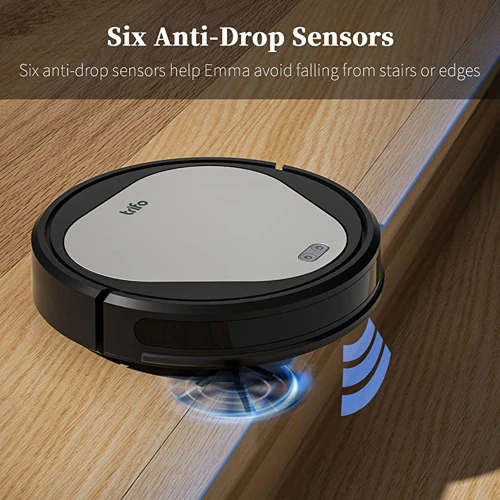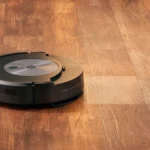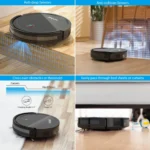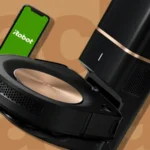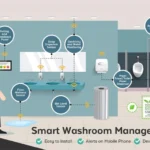As the world becomes more digital, technology is rapidly changing every aspect of our lives. One of the latest innovations in the home cleaning industry is the introduction of smart vacuum cleaners. These devices offer an incredible level of convenience and efficiency, allowing us to keep our homes clean with minimal effort.
However, smart vacuum cleaners rely on a range of sophisticated sensors in order to operate effectively. One of the key features of these sensors is the drop sensor, which is designed to prevent the vacuum cleaner from falling off stairs or ledges. But how do these sensors work, and what are their advantages and limitations? In this article, we’ll explore everything you need to know about drop sensors in smart vacuum cleaners.
What are Drop Sensors?
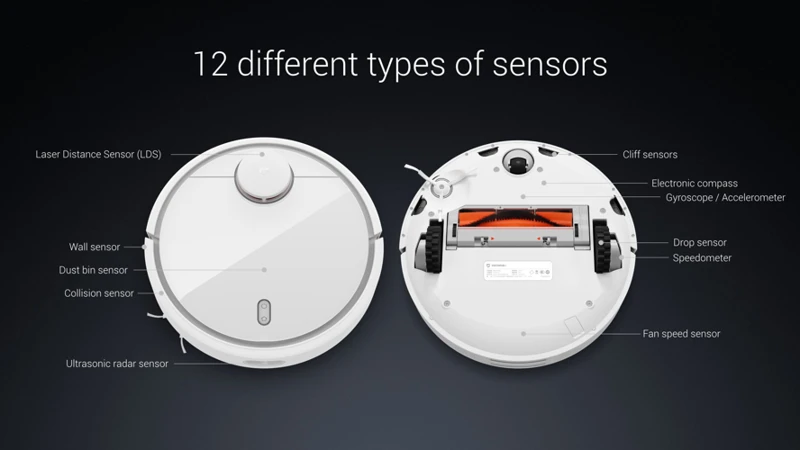
When it comes to smart vacuum cleaners, one of the key technologies that sets them apart from traditional models is the use of drop sensors. These specialized sensors play an essential role in keeping your vacuum cleaner safe and efficient. By detecting when the vacuum is about to fall off a ledge or descend stairs, these sensors help prevent damage and improve performance. In the following sections, we’ll take a closer look at how they work, why they’re important, and more. If you want to learn more about the importance of drop sensors in smart vacuum cleaners, follow this link. Or, if you’re curious about smart vacuums that don’t use drop sensors, check out this post on smart vacuums without drop sensors. And for a roundup of some of the top smart vacuum cleaners with drop sensors to consider, click here to see our guide to the best options on the market.
How Do They Work?
Drop sensors in smart vacuum cleaners work by detecting changes in the environment beneath them, specifically changes in height. They are designed to sense when the vacuum approaches a ledge or a drop-off, such as a set of stairs, and stop the vacuum from moving forward to prevent it from falling off the edge. Here is a breakdown of how these sensors work:
1. A signal is sent out: When the smart vacuum cleaner is in operation, a signal is sent out from the drop sensor to measure the distance between the vacuum and the surface beneath it.
2. The signal bounces back: The signal is then reflected back to the sensor, which calculates the distance between the vacuum cleaner and the surface by measuring the time it takes for this signal to return.
3. Changes in distance are detected: Drop sensors are able to detect even minor changes in distance between the vacuum and its surroundings. This is because the sensor is programmed to sound an alarm or to stop the vacuum if it detects a sudden reduction in distance.
4. Action is taken: Once the vacuum cleaner has detected a sudden reduction in the height, it will immediately stop moving forward to prevent it from falling off the edge. This reaction can vary depending on the type of drop sensor used in the vacuum cleaner.
Understanding how drop sensors work is crucial to understanding how smart vacuum cleaners are able to navigate without falling off of ledges or tumbling down stairs. To learn more about the different types of drop sensors used in smart vacuum cleaners, read our article “Types of Drop Sensors in Smart Vacuum Cleaners”.
Why Are They Important?
Drop sensors are an incredibly important component of smart vacuum cleaners, and their value cannot be overstated. Below are some reasons that illustrate their importance:
- Prevent Accidents: Drop sensors serve as a reliable safety feature, preventing the vacuum cleaner from accidentally falling off stairs or ledges. This is especially important for families with young children and pets in the house.
- Protect the Vacuum Cleaner: Another reason for using drop sensors in smart vacuum cleaners is to prevent damage to the machine itself, since a fall from even a small height can result in permanent damage to the vacuum cleaner.
- Save Time and Money: By preventing falls and damage, drop sensors save time and money in the long run. This is because accidents would require repairs or even purchase of a new vacuum cleaner entirely, resulting in increased expense and inconvenience.
- Efficiency: A vacuum cleaner equipped with drop sensors can navigate around obstacles and ledges, and avoid potential accidents, without you having to worry about them. This leads to more efficient and effective cleaning.
Drop sensors are a vital safety and efficiency feature of smart vacuum cleaners. They prevent accidents, protect the vacuum cleaner, save time and money, and improve efficiency.
How Do Smart Vacuum Cleaners Use Drop Sensors?
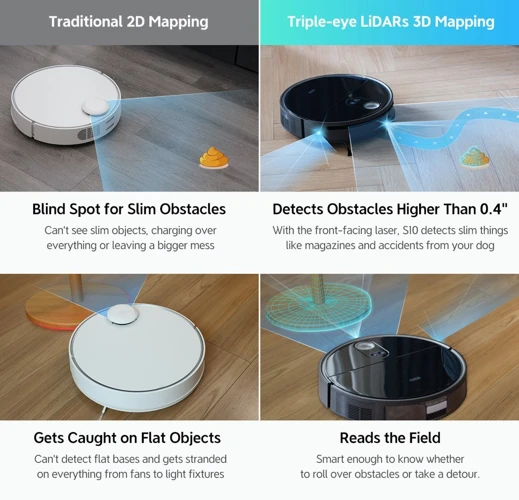
Smart vacuum cleaners are the latest innovative technology that can revolutionize the way we clean our homes. This technology uses advanced sensors that help these devices to navigate and clean different kinds of surfaces effectively. One of the key sensors is the drop sensor. But how do smart vacuum cleaners use this essential sensor to make our lives easier? Let’s delve into the details and find out how robots with drop sensors are changing the game when it comes to cleaning our homes.
Detection
Detection is a critical function of drop sensors in smart vacuum cleaners. It helps the cleaner identify the presence of potentially damaging drops, such as stairs or ledges. The detection process varies according to the type of sensor used in a robot vacuum.
| Infrared Sensors | Infrared sensors send out infrared light to gauge distance. They detect changes in reflected light, allowing them to determine object proximity. When a drop is detected, the cleaner stops before reaching the edge. |
| Acoustic Sensors | Acoustic drop sensors use sound waves to detect edges. They send out a signal, and a microphone picks up the reflected sound waves to determine the distance from the object. When the signal bounces back faster than expected, the cleaner recognizes a drop and adjusts its trajectory accordingly. |
| Time-of-Flight Sensors | Time-of-flight sensors use an LED light to measure the time it takes for light to bounce back off an object. The sensors can pick up information about reflectivity, surface texture, and even the presence of transparent objects. When a drop is located, the vacuum cleaner stops and changes direction. |
| Cliff Sensors | Cliff sensors work using infrared beams that project downward from the robot’s body. They measure the distance to the ground to detect if there is a drop or obstacle in the way. When a drop is detected, the cleaner adjusts its speed or direction to avoid falling. |
| Camera Sensors | Camera sensors use advanced image recognition techniques to identify objects in the robot’s path. They take pictures of the environment and use machine learning to recognize stairs, ledges, and other obstacles. When a drop is located, the robot stops moving or changes direction to avoid collision. |
Detection is the critical first step in the process of preventing falls and damage. Without accurate and efficient detection, robot vacuum cleaners would not be able to operate without human supervision. While each type of drop sensor has its strengths and limitations, they all work together to make smart vacuum cleaners safer and more effective.
Reaction
When a drop sensor in a smart vacuum cleaner detects that the floor beneath it is about to give way, it prompts the machine’s reaction system to kick in. This is done through a combination of software and hardware that works hand in hand to ensure that the vacuum cleaner avoids any potential falls or obstacles.
The reaction system of smart vacuum cleaners uses a combination of motors and wheels to propel the machine safely away from the detected danger. Here are some of the ways that various drop sensors trigger the reaction system:
| Type of Drop Sensor | Reaction |
|---|---|
| Infrared Sensors | Slow down or stop the machine’s forward motion, then back it up or redirect it. This ensures that the vacuum cleaner avoids tumbling down stairs or dropping off the edge of a surface. |
| Acoustic Sensors | Adjust the machine’s suction power to avoid sucking up large debris that can cause a jam or get caught in the machine’s inner workings. |
| Time-of-Flight Sensors | Redirect the machine away from the detected danger using the machine’s navigation system. This ensures that the vacuum cleaner does not collide with any obstacles or fall off the edge of a surface. |
| Cliff Sensors | Signal the machine to slow down or deviate its path, ensuring that it avoids falling off the edge of a surface. |
| Camera Sensors | Use the visual data to precisely map the room and adjust the machine’s path accordingly, ensuring that it avoids obstacles and potential falls. |
Smart vacuum cleaners also have a number of additional safety features that work alongside the drop sensors, such as collision sensors and anti-fall sensors. These sensors work together to ensure that the vacuum cleaner remains stable and avoids any major issues while cleaning your floors.
All in all, the reaction system is a vital component of smart vacuum cleaners that keeps your machine safe, your floors clean, and your home hassle-free. Proper use of this system allows for efficient and effective cleaning, minimizing the risk of damage and saving you time and money in the long run.
Advantages of Drop Sensors in Smart Vacuum Cleaners
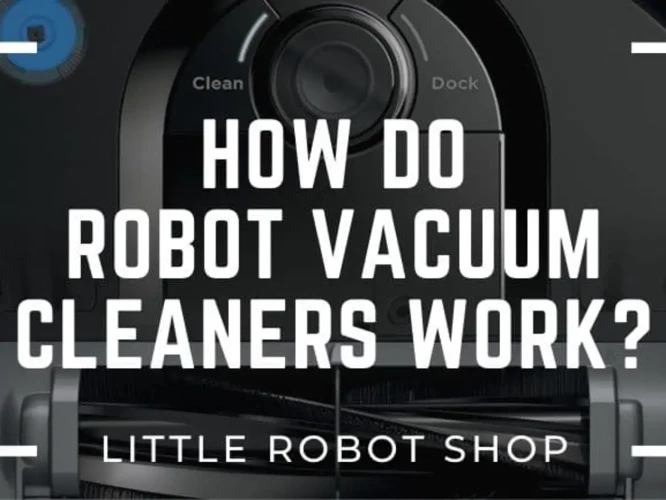
When it comes to maintaining a clean house, smart vacuum cleaners have revolutionized the way we clean up our living spaces. With advanced technology such as drop sensors, these smart vacuum cleaners have become even more efficient and safe to use. Drop sensors are equipped with smart vacuum cleaners to ensure the safety of the device and prevent any potential damage. The benefits of drop sensors in smart vacuum cleaners are numerous, and they play a critical role in making cleaning sessions more efficient and worry-free. Let’s take a closer look at some of the advantages of having drop sensors in your smart vacuum cleaner.
Prevent Falls and Damage
Smart vacuum cleaners equipped with drop sensors are highly effective at preventing falls and damage to your home. These sensors act as a safeguard against accidents that can cause expensive damage to your furniture and the vacuum cleaner itself. Here are some key ways in which drop sensors help prevent falls and damage:
1. Avoids Over-Stepping: Drop sensors in smart vacuum cleaners detect the edge of stairs or ledges, and prevent the device from over-stepping it. This feature ensures that the vacuum cleaner doesn’t fall off a staircase or any other high point in your home.
2. Guards Against Furniture: Smart vacuum cleaners are designed to be thorough in cleaning and can sometimes move forcefully. When equipped with drop sensors, they can detect the lower edges of furniture and avoid colliding with them, thereby preventing potential damage to the furniture and the vacuum cleaner.
3. Prevents Collision with Obstacles: Sometimes, objects fall on the floor and go unnoticed. When this happens, a standard vacuum cleaner could run into these obstacles and cause damage, which is where drop sensors come in. These sensors detect any challenge in the path of the device, allowing it to stop or reroute.
Drop sensors are essential for the longevity and the effectiveness of the smart vacuum cleaner, and they can protect both the machine and your home. Thanks to the accuracy of the sensors, the likelihood of damage or accidents happening is greatly reduced. Whether you have an obstacle in the way or a ledge to avoid, drop sensors are incredibly effective in their precise detection of hazards, and thus they are a significant asset to smart vacuum cleaners.
Efficiency
Smart vacuum cleaners have revolutionized the way we clean our homes, and drop sensors have played an important role in this innovation. These sensors not only provide safety by detecting edges and cliffs, but they also improve the overall efficiency of the vacuum cleaning process.
Here are some ways in which drop sensors improve the efficiency of smart vacuum cleaners:
- Optimizes Cleaning Path: Drop sensors allow smart vacuum cleaners to map out the cleaning area and create an efficient cleaning path. This ensures that the vacuum doesn’t waste time cleaning areas that have already been cleaned, resulting in quicker and more thorough cleaning.
- Reduces Cleaning Time: Drop sensors prevent smart vacuum cleaners from falling off edges or down stairs, which can cause damage and ultimately require more cleaning time. By preventing such mishaps, the vacuum can complete its cleaning tasks more efficiently.
- Improves Battery Life: When the vacuum does not have to constantly stop and restart due to falls or collisions, its battery life is preserved. This means that it can clean for longer periods without requiring a recharge, ultimately improving the vacuum’s efficiency.
- Enhances Navigation Capabilities: Drop sensors enable smart vacuum cleaners to navigate through intricate areas, such as tight corners and under furniture. By preventing falls and crashes, the vacuum can easily maneuver in tight spaces to provide a more thorough cleaning.
Drop sensors have greatly improved the efficiency of smart vacuum cleaners by optimizing cleaning paths, reducing cleaning time, improving battery life, and enhancing navigation capabilities. While these sensors may not be able to detect every obstacle or challenge, they have undoubtedly made vacuum cleaning an easier and more efficient task.
Types of Drop Sensors in Smart Vacuum Cleaners
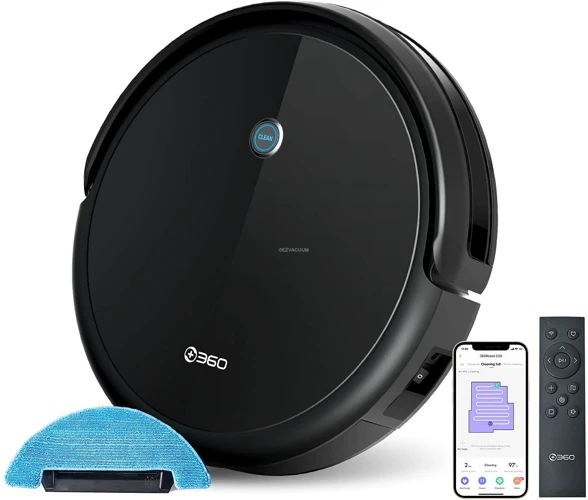
As we dive deeper into the world of drop sensors in smart vacuum cleaners, it’s important to take a closer look at the different types of sensors available. Each type of sensor utilizes a different technology to detect drops, ensuring that your smart vacuum cleaner stays on track and avoids any potential accidents. So, without further ado, let’s explore the various methods of drop detection available in smart vacuums and how they function.
Infrared Sensors
In smart vacuum cleaners, infrared sensors are commonly used to detect drops and prevent falls. These sensors are designed to emit infrared rays and then detect their reflection. The sensors use this feedback to determine the distance between the vacuum and the floor.
Advantages of Infrared Sensors:
- Accuracy: Infrared sensors are highly accurate and can detect even small variations in distances. This accuracy ensures that vacuum cleaners can detect even the smallest drop and prevent falls.
- Low cost: Infrared sensors are relatively inexpensive to manufacture and install, making them one of the most popular options for smart vacuum cleaner manufacturers.
- Efficiency: Infrared sensors work quickly and efficiently because they emit and detect infrared rays almost instantaneously. Their efficiency enables a vacuum cleaner to detect a drop and change direction before coming into harm’s way.
Limitations of Infrared Sensors:
- Environmental Factors: Infrared sensors can be affected by environmental factors, such as bright lights or reflected surfaces. This interference can sometimes cause the sensors to malfunction or produce inaccuracies in readings.
- Distance Limitations: Infrared sensors have a limited range and are only effective for detecting drops within a certain range. If the drop exceeds this range, the sensor may not be able to detect it and the vacuum cleaner may fall.
- Opaque Objects: Infrared sensors can have difficulty detecting opaque surfaces or objects, making it difficult for the vacuum cleaner to identify potential drops.
Despite their limitations, infrared sensors are a reliable and cost-effective option for smart vacuum cleaners. With their accuracy and efficiency, they play a critical role in ensuring that vacuum cleaners navigate safely and efficiently around the home.
Acoustic Sensors
Acoustic sensors in smart vacuum cleaners work by emitting sound waves into the environment to detect distance and avoid falls. These sensors use sonar technology to determine the presence of objects in the path of the vacuum cleaner. The sound waves emitted by these sensors reflect off objects and return to the sensor, where they are analyzed to determine the distance between the sensor and the object.
Advantages of Acoustic Sensors:
- Acoustic sensors are highly accurate and can detect objects with great precision.
- They are also efficient in detecting distance in smaller areas as they have a shorter range than other sensors.
- These sensors are less prone to interference from other sensors or light sources due to the nature of sound waves.
- Acoustic sensors can be particularly useful in detecting glass or other hard surfaces that may not be detectable by other sensors.
Limitations of Acoustic Sensors:
- Acoustic sensors can be slower in detecting objects in larger areas as they have a shorter range than other sensors.
- They may not work as well in environments with high levels of ambient noise, such as a loud TV or music.
- Acoustic sensors may have difficulty detecting soft or absorbent materials, such as carpets or curtains, as sound waves may be dampened.
- Interference from other sound-emitting devices can also cause inaccuracies in measurements.
While acoustic sensors are not the only type of drop sensor used in smart vacuum cleaners, they provide a valuable contribution to the overall navigation and safety of the device. Future advancements in sonar technology could lead to even more accurate and efficient acoustic sensors in the future.
Time-of-Flight Sensors
Time-of-Flight (ToF) sensors are another type of drop sensor used in smart vacuum cleaners. These sensors measure the distance between the vacuum cleaner and the ground by emitting a low-power laser or LED light and measuring the time it takes for the light to bounce back.
Advantages of ToF Sensors
One major advantage of ToF sensors is their ability to accurately measure distances, which allows for more precise detection of drops and obstacles. Additionally, these sensors are not affected by ambient light, which can be a problem for some other types of sensors.
Another advantage is their speed of operation. ToF sensors can take readings at a rate of hundreds or even thousands of times per second, making them particularly useful for detecting fast-moving objects or obstacles.
Disadvantages of ToF Sensors
Despite their many advantages, there are also some disadvantages to using ToF sensors in smart vacuum cleaners. One major limitation is their relatively high cost, which can make them impractical for use in low-cost or budget vacuum cleaners.
Another drawback is their limited range. While many ToF sensors can measure distances of several meters in optimal conditions, their effective range can be reduced by factors such as background noise, surface reflection, and other environmental factors.
Comparison of Drop Sensors in Smart Vacuum Cleaners
To summarize, each type of drop sensor has its own advantages and disadvantages. Infrared sensors are affordable and widely used, but they can struggle with transparent objects. Acoustic sensors are good at detecting large drops but not ideal for small drops. Cliff sensors are durable and reliable but not as accurate as some other options. Camera sensors are the most advanced but also the most expensive. And finally, ToF sensors offer precise measurements and fast readings but can be costly and have limited range.
Here is a comparison table for the different types of drop sensors in smart vacuum cleaners:
| Sensor Type | Advantages | Disadvantages |
|——————-|—————————|——————————–|
| Infrared sensors | Affordable, widely used | Difficulty detecting transparent objects |
| Acoustic sensors | Good at detecting large drops | Not ideal for small drops |
| Cliff sensors | Durable, reliable | Not as accurate as other options |
| Camera sensors | Most advanced | Most expensive |
| Time-of-Flight sensors | Precise measurements, fast readings | Costly, limited range |
Cliff Sensors
Smart vacuum cleaners have revolutionized the way we clean our homes, ensuring that the task is done more efficiently and effectively than ever. But how do they keep themselves from falling off stairs, ledges, or other high surfaces? This is where cliff sensors come into play.
Cliff sensors are one of the main types of drop sensors used in smart vacuum cleaners, and they work by detecting sudden changes in depth or height. They typically use a combination of lasers and infrared technology to create a map of the surrounding environment, allowing the vacuum cleaner to detect any drops or cliffs in its path.
Some of the advantages of cliff sensors include their high level of accuracy and their ability to help vacuum cleaners navigate through complex environments. For example, a smart vacuum cleaner with cliff sensors can detect and avoid staircases, ensuring that it does not accidentally fall down and get damaged.
However, it’s worth noting that cliff sensors do have certain limitations. For one, they can struggle to detect transparent objects, such as glass or clear plastic. Additionally, if a multi-level home has multiple staircases, there is a chance that the vacuum cleaner may get confused and accidentally fall off a different level.
Despite these limitations, cliff sensors remain an important part of smart vacuum cleaner technology. By helping these devices navigate through complex environments safely and efficiently, they make household cleaning a simpler and less tedious task for all.
Camera Sensors
Camera sensors are a more recent addition to smart vacuum cleaners, and they work by using cameras to take images of the floor and analyze them for drop-off points. Here are some key points about camera sensors in smart vacuum cleaners:
1. Detail-Oriented: Unlike other sensors that rely on infrared or other technologies, camera sensors can detect more details in their surroundings. This makes them ideal for mapping out a room, detecting potential hazards, and ensuring a thorough cleaning process.
2. Versatile: Because cameras can transmit real-time images and precise data, they can be used in a variety of household environments. From carpets to hardwood floors, camera sensors can adapt to the surface they are on and adjust cleaning speeds accordingly.
3. Accuracy: Since camera sensors can detect small and subtle changes in their environment, they provide highly accurate data. They can detect even slight changes in elevation or gaps in the floor, which other sensors might miss.
4. Real-Time Data: Camera sensors deliver data in real-time, which can improve the efficiency of the cleaning process. With instant access to visual data, the robot can identify drop-off points and adjust their cleaning routes accordingly.
5. Cost: One of the biggest setbacks to camera sensors is their cost. Because they use sophisticated camera technology, they tend to be more expensive than other types of sensors. Determining whether the added cost is worth the investment will depend on individual needs and preferences.
6. Privacy Concerns: Some people may be hesitant to use cameras in their households due to privacy concerns, as the data can be sensitive. If using camera sensors, it’s crucial to understand any data collection or storage policies before purchasing a smart vacuum cleaner.
Camera sensors offer a more advanced and modern approach to detecting drop-off points. They have the potential to provide precise, real-time data that can improve the efficiency of smart vacuum cleaners, even in complex environments. However, their cost and privacy concerns should be taken into account before making a purchase decision.
Limitations of Drop Sensors in Smart Vacuum Cleaners
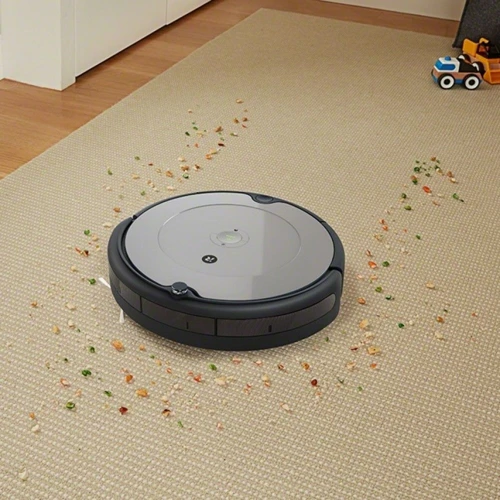
As with any technology, drop sensors in smart vacuum cleaners have their limitations. While they are incredibly useful and can save a lot of time and effort when cleaning, it’s important to understand the potential downsides. In this section, we’ll explore some of the limitations of drop sensors and what they mean for the use of smart vacuum cleaners. Keep reading to learn more.
Difficulty Detecting Transparent Objects
Drop sensors in smart vacuum cleaners are highly effective in detecting obstacles and avoiding collisions, but they also face some limitations. One of the biggest challenges for drop sensors is detecting transparent objects.
Transparent objects, such as glass tables or windows, are difficult for drop sensors to detect because they don’t reflect or absorb the infrared light that these sensors use to detect drop-offs. As a result, if a smart vacuum cleaner is cleaning near a transparent object, it may not recognize that there is a potential hazard and could continue cleaning, potentially causing damage or falling off the edge.
To illustrate the difficulty that drop sensors face in detecting transparent objects, consider the following table:
| Material | Infrared Sensor Detection | Acoustic Sensor Detection | Time-of-Flight Sensor Detection |
|———-|————————–|—————————|——————————–|
| Wood | Detected | Detected | Detected |
| Metal | Detected | Detected | Detected |
| Carpet | Detected | Detected | Detected |
| Glass | Not detected | Detected | Detected |
As you can see, while drop sensors with acoustic and time-of-flight technology are able to detect a transparent material like glass, infrared sensors are not. This can make it challenging for smart vacuum cleaners to navigate around transparent objects and avoid falls or damage.
To overcome the difficulty in detecting transparent objects, manufacturers of smart vacuum cleaners are experimenting with new sensor technologies. For example, some companies are exploring the use of camera sensors that can recognize transparent objects by analyzing the changes in light and shadow. However, this technology is still in the experimental stage and may not be widely available for some time.
Despite the difficulty in detecting transparent objects, drop sensors in smart vacuum cleaners are still highly effective in improving the safety and efficiency of cleaning. Whether it’s using infrared, acoustic, or time-of-flight sensors, smart vacuum cleaners can detect and avoid potential hazards, making cleaning a breeze.
Challenges with Multi-Level Homes
Smart vacuum cleaners with drop sensors are a convenient and efficient way to keep homes clean. However, they do come with some limitations, especially when it comes to homes with multiple levels.
Challenges with Multi-Level Homes
The main challenge that smart vacuum cleaners face in multi-level homes is navigating the stairs. Drop sensors that are designed to detect ledges and drops can be triggered by staircases if the sensors are not programmed to recognize staircases as non-dangerous. As a result, the vacuum cleaner will stop cleaning as soon as it comes close to the staircase, and it may not be able to clean the entire floor.
| Issue | Solution |
| The vacuum cleaner may not be able to clean the entire floor because it cannot navigate the stairs. | Some smart vacuum cleaners are equipped with separate sets of drop sensors that are specifically designed to detect stairs. These sensors allow the vacuum cleaner to detect the stairs without assuming that they are ledges or drops. Other vacuum cleaners come with accompanying mobile apps that allow users to manually control the vacuum cleaner’s cleaning pattern and avoid the stairs altogether. |
| The vacuum cleaner may fall down the stairs if the drop sensors malfunction or if the stairs are too steep. | Some smart vacuum cleaners come with cliff detection sensors, which are specifically designed to detect steep drops such as staircases. The cliff sensors are often combined with drop sensors to create a more comprehensive protection system. |
| The vacuum cleaner may not be able to navigate tight spaces or staircases with narrow edges. | Some smart vacuum cleaners come with a combination of sensors, including acoustic sensors and infrared sensors. These sensors allow the vacuum cleaner to accurately detect narrow edges and tight spaces, increasing its ability to clean effectively around the stairs. |
While smart vacuum cleaners with drop sensors are an efficient and convenient way to clean homes, they do come with limitations when it comes to multi-level homes. Smart vacuum cleaners with separate sets of drop sensors or accompanying mobile apps can mitigate the issue, but it is important for consumers to be aware of these limitations before making a purchase.
Future Implications
As smart home technology continues to rapidly develop, the future implications of drop sensor technology in smart vacuum cleaners are exciting. With advancements in AI and machine learning, it is possible that in the near future smart vacuum cleaners will have the ability to map out the layout of a home and identify areas that may pose a higher risk for falls or damage. This kind of advanced technology would not only make smart vacuum cleaners even more efficient, but it could also lead to the development of new safety features for the home.
The application of drop sensor technology could also extend beyond just vacuum cleaners. Smart home devices ranging from window cleaning robots to laundry folding machines could all benefit from the safety features offered by drop sensors. Additionally, as households become more eco-conscious, the integration of drop sensor technology into smart vacuum cleaners could lead to lower energy consumption and waste reduction.
In terms of business implications, the inclusion of drop sensor technology in smart vacuum cleaners may become the standard for vacuum cleaner manufacturers. As more consumers become aware of the benefits of drop sensors for the safety and efficiency of their homes, demand for this technology may increase. Companies that fail to include this feature in their products may find themselves at a disadvantage in the market.
The future implications of drop sensors in smart vacuum cleaners are vast and exciting. As technology continues to improve, it is likely that we will see more advanced safety features and energy-efficient solutions for the home. The development of this technology is a promising step towards a more connected and safe future.
Conclusion
In conclusion, drop sensors play a crucial role in the functionality of smart vacuum cleaners. They are designed to detect changes in floor elevation and prevent the device from falling off edges, stairs, and other hazardous areas. The use of drop sensors not only prevents damages to both the vacuum cleaner and the surroundings, but also ensures efficient cleaning without interruption or extra manual effort.
There are various types of drop sensors utilized in smart vacuum cleaners, each with its own advantages and limitations. Infrared sensors, acoustic sensors, time-of-flight sensors, cliff sensors, and camera sensors are all effective in detecting floor changes and preventing falls. However, they might face challenges with transparent objects, multi-level homes, or accuracy.
Despite current limitations, the future of drop sensors in smart vacuum cleaners is promising. Advancements in technology could enhance the accuracy of detection and potentially add new features to the device. For instance, the introduction of LIDAR sensors could revolutionize the field of smart vacuums by providing more precise and detailed scanning of the environment.
Overall, the integration of drop sensors in smart vacuum cleaners is a significant breakthrough in the field of home automation. It not only simplifies the task of cleaning but also adds an extra layer of safety and security to the home. As technology improves, the potential of these devices will only grow, and we are excited to see what the future holds for smart vacuum cleaners equipped with drop sensors.
Frequently Asked Questions
How accurate are drop sensors in smart vacuum cleaners?
Drop sensors in smart vacuum cleaners are designed to be very accurate, with a high degree of precision. However, each type of drop sensor has its own limitations, which may affect its accuracy in certain situations.
How do infrared sensors work in smart vacuum cleaners?
Infrared sensors in smart vacuum cleaners use light waves to detect the presence of objects and drop-offs. The sensors emit a beam of infrared light, and when the light reflects off an object or a drop-off, it is detected by a receiver, which then triggers the vacuum to change direction or stop.
Can acoustic sensors detect small obstacles?
Acoustic sensors in smart vacuum cleaners are not very effective at detecting small obstacles, as they rely on sound waves that bounce off objects to detect their presence. They may miss low-lying objects such as toys or cords.
What is the advantage of having a camera sensor in a smart vacuum cleaner?
A camera sensor in a smart vacuum cleaner is able to collect visual data from its surroundings in real time. This allows it to detect drop-offs and map out its surroundings, providing a more accurate and efficient cleaning experience.
Can time-of-flight sensors detect the depth of a drop-off?
Time-of-flight sensors in smart vacuum cleaners are able to calculate the distance between the vacuum and a drop-off, providing a good estimate of its depth. However, they may not be able to detect very narrow or steep drop-offs.
How do cliff sensors prevent damage to the vacuum cleaner?
Cliff sensors in smart vacuum cleaners are able to detect drop-offs, such as stairs or ledges, before the vacuum reaches them. When a drop-off is detected, the vacuum will change direction or stop, preventing it from falling and causing damage.
Do smart vacuum cleaners with drop sensors require maintenance?
Smart vacuum cleaners with drop sensors do require some maintenance, such as cleaning or replacing the sensors when they become dirty or worn out. However, this is a minor task and does not require much time or effort.
Can a smart vacuum cleaner with drop sensors navigate in complete darkness?
Most smart vacuum cleaners with drop sensors are able to navigate in low light conditions, but they may not be able to navigate in complete darkness. This is because some types of drop sensors, such as infrared or camera sensors, require some amount of light to function.
Do drop sensors make smart vacuum cleaners more expensive?
Smart vacuum cleaners with drop sensors may be slightly more expensive than those without them. However, the extra cost is usually minimal and is offset by the added convenience and efficiency that drop sensors provide.
What is the biggest limitation of drop sensors in smart vacuum cleaners?
The biggest limitation of drop sensors in smart vacuum cleaners is that they may not be able to detect transparent or shiny surfaces, such as glass or mirrors. This can be a problem in homes with a lot of glass surfaces, as the vacuum may not be able to detect drop-offs and could potentially fall and get damaged.
